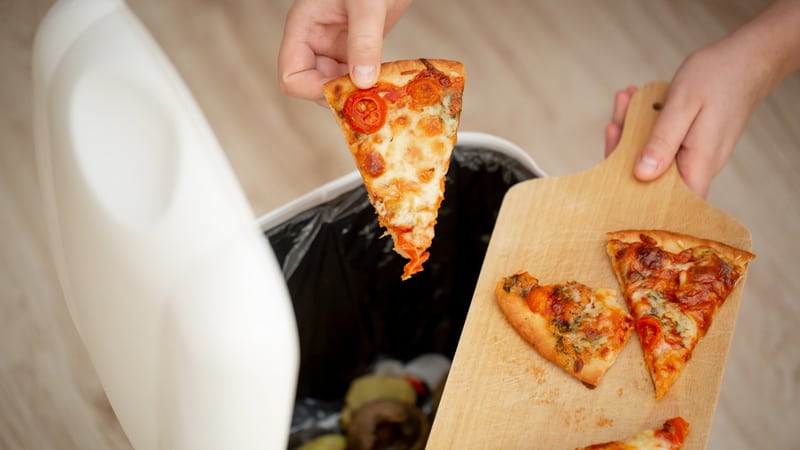Health: How to Reduce Food Waste
Save money, save the planet

Consumers from around the world waste mountains of food. In fact, food is the largest category of waste in landfills, where it generates methane, a contributor to global climate change. The Food and Agricultural Organization (FAO) of the United Nations estimates that uneaten food belts out 3.3 billion tons of greenhouse gases to the earth’s atmosphere each year. If global food waste were a country, it would be the third-largest contributor to greenhouse gas emissions, behind China and the United States.
The warming of the globe caused by the greenhouse gases is not the only concern. Among other things, “wasting food wastes the natural resources that were used to grow it, the labor that was needed to grow and harvest it, and the money consumers used to purchase it,” says Jennifer Otten, Ph.D., R.D., associate professor and food systems director of the Food Systems, Nutrition and Health Program at the University of Washington.
Americans waste 30% to 40% of the nation’s food supply, with more than 31% occurring at the retail and consumer level. Yet each part of the food system plays a role. According to a January 2020 report by the Economic Research Service of the USDA, the following are only a few factors in the food supply chain that lead to wasted nourishment.
Price Fluctuations
When prices for produce fall below the cost growers must pay to get the food to market, they may choose to leave the food unharvested.
Labor Costs and Availability
If growers can’t find or afford labor, especially for harvesting, they again may choose to leave their crops unharvested.
Food Quality or Expectations
Food buyers, such as restaurants and supermarkets, may reject food that doesn’t meet their requirements for appearance or other quality.
Governments and Industry Aim to Reduce Food Waste
In 2015, the USDA and the EPA announced a goal to reduce U.S. food loss and waste by 50% by the year 2030. To date, at least 25 corporations, including restaurants, food manufacturers, hotel chains and food management companies, have publicly committed to cutting food loss and waste in half by 2030 through prevention, recovery and recycling efforts. For example, some companies donate surplus food to service organizations, or they send it for animal feed, compost or energy production. Others have launched waste awareness campaigns or have committed to using stem-to-root and snout-to-tail cooking techniques.
What You Can Do to Reduce Food Waste
Each us needs to do our part, urges Otten, who says that most people waste more than they realize. She suggests monitoring your waste. What are you throwing away and when? Identify your bad habits. For example, do you buy too much in the supermarket, cook more food than your family can eat, or toss out restaurant leftovers? Once you know where your weaknesses are, you can shore them up.
Use All the Parts
By eating as much of the food as possible, you’ll automatically waste less, explains Sharon Palmer, M.S.F.S., R.D.N., the Plant- Powered Dietitian. For example, shred broccoli stalks for a salad or stir-fry and use the leaves in soup.
Plan Your Meals
Create a menu with just enough flexibility to keep it interesting and to take advantage of great supermarket or farm stand finds.
Keep Fresh and Cooked Foods Cool
Unload your stash as soon as you’re home from the market, and package leftovers right after eating. By keeping your food cold, you’ll help it last longer. Keep your refrigerator at or below 40 F and your freezer at 0 F.
Value Your Food
Imagine that you pay three or more times for your groceries than your receipt actually shows. Are you more likely to be careful with it and waste less? Probably. Instead of just valuing your food based on its price tag, also think about the people who worked to get it to you or the animal who provided it.
Avoid Overeating
Eating more than your body needs for nourishment is a form of food waste, explains Palmer.
Have a “Must-Go” Night
Enjoy an easy meal once a week or so when no has to cook. Simply reheat everything that must go before it spoils.
Cook Your Fruit
Sometimes a fresh plum or apple is disappointing. Instead of throwing it out, grill, bake or cook it. Cooking fruit brings out more natural sweetness.
Scan Your Inventory
At least once weekly, go through your refrigerator to see what needs to be eaten up.
- Turn veggies and cooked grains into soup.
- Package leftovers for the freezer.
- Mix several leftovers with beaten eggs and bake for a light meal.
Understand Product Dates
Usually sell-by and best-by dates refer to food quality, not to safety, so you can generally keep cereal or canned vegetables beyond those dates. One exception is the use-by date on infant formula. Don’t keep formula beyond its use-by date.
Compost
Save anything you can’t use elsewhere for the compost pile, suggests Palmer. It nourishes your soil. Your flower garden or vegetables will thank you.
For more wellness tips, visit our health page!
Reprinted with permission from Environmental Nutrition, a monthly publication of Belvoir Media Group, LLC. 800-829-5384. www.EnvironmentalNutrition.com.
©2020 Belvoir Media Group. Distributed by Tribune Content Agency, LLC.

